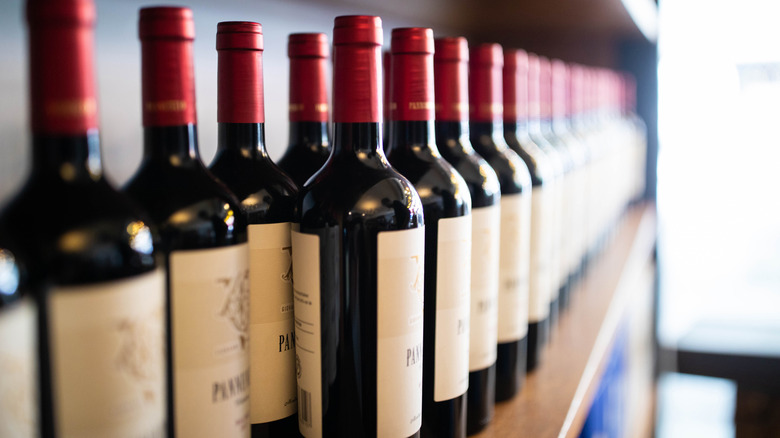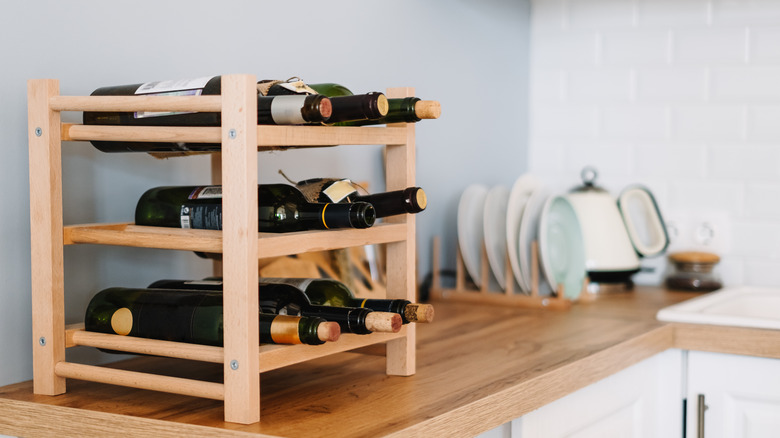Why You Should Never Store Wine On Top Of The Fridge
Selecting the right wine at the store can be hard enough, but the journey isn't over once you bring the bottle home. The name of the game when it comes to storing wine is "cool, dry, and dark." All that dead space on top of your fridge might seem like a solid, ingenious space-saving solution, yet with its warm, damp, bright conditions, it's pretty much the least compatible spot for keeping your delicate vino safe. Think of the top of your fridge as a zone with a unique, harsh climate. The temperature fluctuates intensely, which can quickly deteriorate the quality of your wine — and spoil your canned goods, suck the flavor out of spices, set your paper towels on fire, kill your houseplants, and even damage electronic appliances. (Also ... dust?)
Heat is generated by a refrigerator's condenser coils, which take the heat from inside the fridge and push it into the surrounding air. It varies per model, but these helpful little coils are typically located at the back, bottom, or top of the appliance. As wines are exposed to higher temperatures from the emitted heat, the tannins become more pronounced, turning the profile from complex to astringent. At 70 degrees Fahrenheit, the damage is already starting. Exposure to light also damages wine, and when the glass comes under direct light, it heats up, creating a double hit.
Your vino may be a star, but it doesn't like lights or action
Many refrigerators (especially older models) vibrate or shake as part of regular cycling, and these vibrations can potentially affect the sediment in the bottle, which invariably affects the taste. On a safety-related note, the vibrations could send your glass wine bottles shattering to the floor. Keeping wine on top of the fridge can also block the unit's ventilation openings, which will make it work less efficiently. Instead, store your wine in the cool, dark produce drawers of your fridge. Or, better yet, if you have a basement, keep it down there.
For short-term storage (aka what you're doing unless you have a dedicated wine fridge or cellar), maintaining a constant temperature of 50 to 59 degrees Fahrenheit is crucial to keeping your wine in peak condition and avoiding symptoms of premature aging. This temperature range applies to red, white, sparkling, and fortified wines for optimal storage conditions. Proper temperature is critical to enjoying your wine to its fullest potential as well. The ideal serving temperature is 62 to 68 degrees Fahrenheit for reds and 49 to 55 degrees for whites. If the wine emits a nose-burning alcohol smell when you uncork it, it's too warm. Slam that bad boy in the fridge to cool it down. With proper temperature maintenance, your fine wine will age like a ... well, you get the point.

